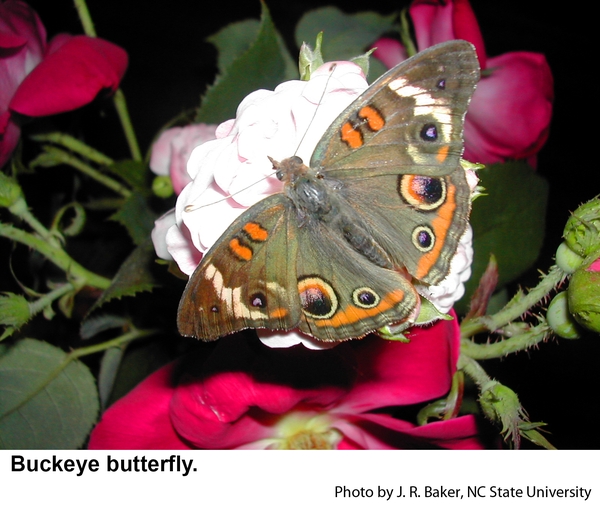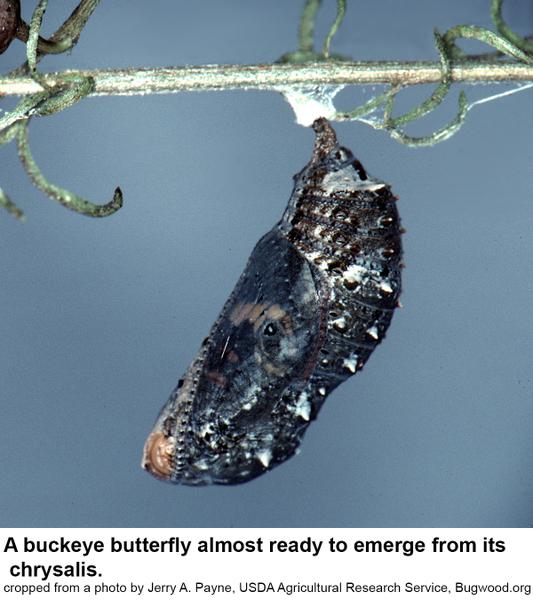Description and Biology
The buckeye butterfly, Junonia coenia, is one of the brushfooted butterflies, so called because the front legs are brush-like appendages. These butterflies stand on the second and third pairs of legs and appear to have only four legs because the "brushes" are usually folded neatly against the thorax. They are named for their conspicuous eyespots especially on the hind wings. Females lay eggs singly on their host plants. The caterpillars of the brushfooted butterflies are covered with spines and most of them are dark. This insect overwinters as adults and caterpillars. The chrysalis does not seem to be a resting (diapausing) stage. We have several generations per year in North Carolina.
Host Plants
Buckeye caterpillars are solitary and mostly feed on the weed plantain and on Gerardia, grown for its showy flowers. It also feeds on snapdragon, toadflax and some other native plants. Buckeye butterflies visit numerous weedy and ornamental flowers.
Residential Recommendation
Because plantain is not a particularly desirable plant in the landscape, should buckeye caterpillars be noticed on it, no control seems necessary. Should buckeye caterpillars be found causing actual damage to snapdragon or Gerardia, use an insecticide labeled for use in the landscape.
.
References
- Common Buckeye (Junonia coenia). Watuwa, J. 2018. Butterfly Identification, Types of ButterflyButterflies in USAButterfly Facts.
- Common name: common buckeye, scientific name: Junonia coenia Hübner (Insecta: Lepidoptera: Nymphalidae). Daniels, J. C. 2008 (rev. 2014). Featured Creatures, Entomology & Nematology, FDACS/DPI, EDIS. Publication Number: EENY-426.
- Junonia coenia. Anonymous. 2013. Wikipedia, the free encyclopedia.
- Extension Plant Pathology Publications and Factsheets
- Horticultural Science Publications
- North Carolina Agricultural Chemicals Manual
For assistance with a specific problem, contact your local N.C. Cooperative Extension Center
This Factsheet has not been peer reviewed.
Publication date: Nov. 27, 2012
Reviewed/Revised: Aug. 19, 2024
Recommendations for the use of agricultural chemicals are included in this publication as a convenience to the reader. The use of brand names and any mention or listing of commercial products or services in this publication does not imply endorsement by NC State University or N.C. A&T State University nor discrimination against similar products or services not mentioned. Individuals who use agricultural chemicals are responsible for ensuring that the intended use complies with current regulations and conforms to the product label. Be sure to obtain current information about usage regulations and examine a current product label before applying any chemical. For assistance, contact your local N.C. Cooperative Extension county center.
N.C. Cooperative Extension prohibits discrimination and harassment regardless of age, color, disability, family and marital status, gender identity, national origin, political beliefs, race, religion, sex (including pregnancy), sexual orientation and veteran status.




